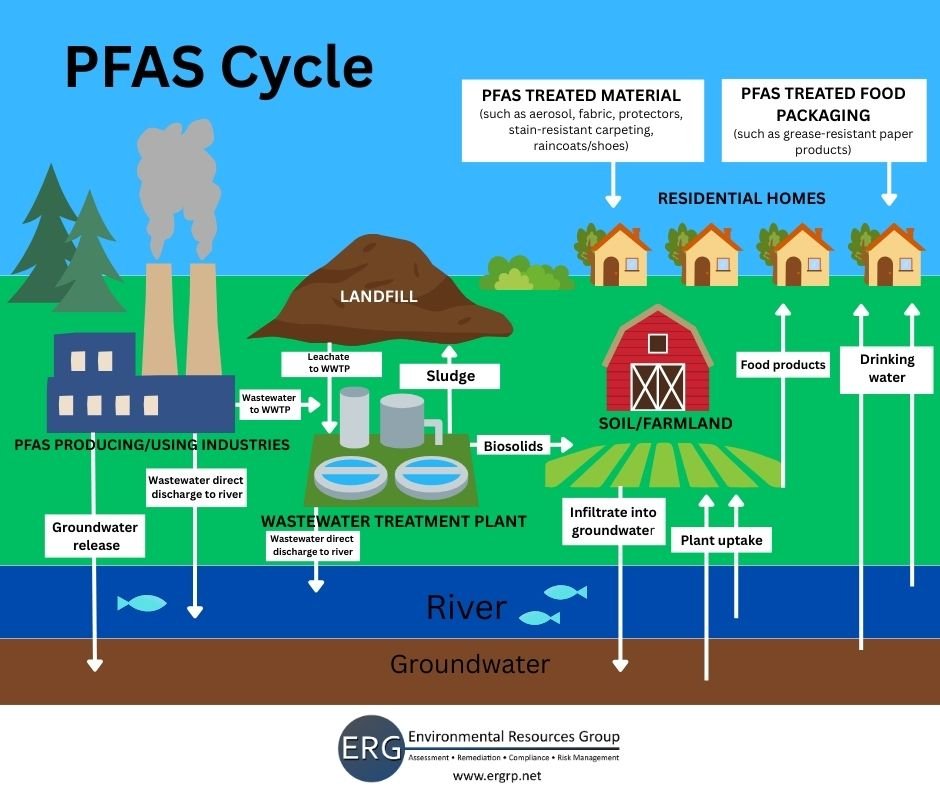PFAS Explained
What are PFAS?
Per- and polyfluoroalkyl substances (PFAS) are manufactured chemicals widely used for water and stain resistance and fighting fires. They are called “forever chemicals” because they resist breakdown. They can be found even in the blood of humans worldwide due to the widespread use and persistence in the environment. While only a few PFAS are known to be toxic, other PFAS have not been tested extensively, if at all.
Are PFAS safe?
Research on PFAS is ongoing, but studies have shown that even at low levels, PFAS can cause health risks. Exposure to certain levels of PFAS may lead to:
Cancer Effects
Weight Effects
Immune Effects
Developmental Effects
Reproductive Effects
Where are PFAS found?
A person can be exposed to PFAS in various ways, including touching, drinking, eating, and breathing in materials containing them. Most people in the United States have been exposed to PFAS since they are used in numerous industrial and consumer products, including firefighting foam, food packaging, cosmetics, and textiles.
What is being done to protect people and the environment from PFAS in the USA?
The Environmental Protection Agency (EPA) and server states have taken several steps to protect people and the environment from PFAS contamination via implementing regulations, promoting research on prevention, remediation, and health impacts.
What is ERG’s role when it comes to PFAS?
ERG’s environmental professionals offer the experience necessary in investigations, remediations, and compliance, along with excellent quality assurance and control, to effectively manage PFAS issues. The remediation of PFAS in liquid or solid matrices requires state-of-the-art technology, or in many cases, a combination of new and existing technologies. Effective remediation techniques include removal methods (e.g., Adsorption, Ion Exchange, Membrane Filtration, and Foam Fractionation), destruction methods (e.g., Electrochemical Oxidation, Incineration), and Stabilization or Immobilization. ERG has completed many PFAS investigations to identify sources of PFAS to soil, groundwater, wastewater, drinking water, stormwater, and surface water bodies at public, commercial, and industrial properties. Furthermore, ERG has provided design services to remove PFAS in landfill leachate, wastewater sludge, stormwater, and groundwater since 2019.

